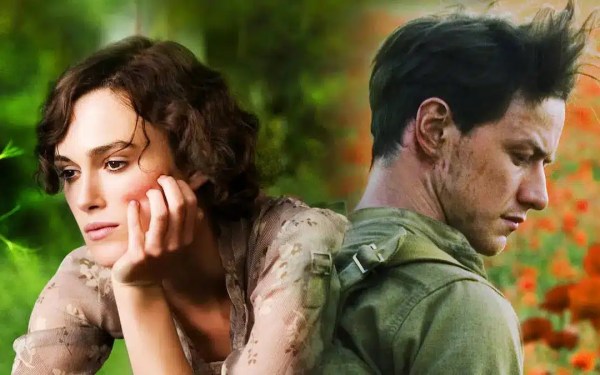Review: Where The Crawdads Sing by Delia Owens

Disclaimer
This post may contain affiliate links. I will make a small commission if you make a purchase through one of these links, at no extra cost to you. See full disclosure and disclaimer policy HERE.
Have you ever read a book so atmospheric, it feels like you’re living inside it? Where the Crawdads Sing by Delia Owens is exactly that kind of magic. It’s not just a novel—it’s an invitation to get lost in the wild, whispering marshes of North Carolina, where nature and loneliness tangle like vines around your heart. Let’s dive in (boots muddy and all) and unpack why this book became such a runaway sensation.
Table of Contents
- Plot Overview
- Themes: Loneliness, Nature, and the Need to Belong
- Writing Style: Lyrical, Poetic, and a Bit Slow at Times
- Characters: Broken, Beautiful, and Believably Flawed
- Conclusion
- FAQs
Plot Overview
On the surface, Where the Crawdads Sing sounds simple: a girl named Kya Clark, abandoned by her family, grows up isolated in the marshlands. Locals call her “Marsh Girl,” and gossip swirls around her like mosquitoes in the summer heat.
But don’t be fooled—this isn’t just about survival. It’s a haunting blend of coming-of-age tenderness, an unexpected murder mystery, and an ode to the raw beauty of nature.
The novel slips between two timelines: Kya’s childhood in the 1950s and a 1969 investigation into the death of Chase Andrews, the town’s golden boy. As the timelines weave together, a picture of love, betrayal, and resilience emerges—and it’s nothing short of mesmerising.
Themes: Loneliness, Nature, and the Need to Belong
1. Loneliness and Isolation
At its core, this novel is a raw exploration of what it means to be completely, utterly alone. Kya’s abandonment by her family forces her to fend for herself at a ridiculously young age. Her isolation isn’t just physical—it’s emotional too.
The marsh becomes both her sanctuary and her prison. Owens makes you feel the ache of solitude so vividly, it’s almost like a character in its own right.
2. Nature as a Nurturer and Teacher
Nature isn’t just a setting here—it’s Kya’s mentor, mother, and friend. She learns survival, love, and even social dynamics by observing the creatures around her. The marsh teaches her everything the town people never could. It’s a powerful reminder that healing and wisdom sometimes come from the earth itself, not from other humans.
3. Prejudice and Social Inequality
Kya is labeled as “Marsh Girl” and treated like a ghost by the townspeople—judged, dismissed, and discriminated against simply because of where she lives and how she looks. Owens sharply critiques the way societies often mistreat those who don’t fit neatly into their little boxes. In a way, the novel asks: Who is really “wild”—Kya, or the people who scorn her?
4. Coming of Age and Self-Reliance
Kya’s journey from a scared, abandoned child to a fierce, self-reliant woman is a classic coming-of-age arc—but with a wild twist. Unlike most coming-of-age stories, Kya doesn’t have mentors or a community to guide her. She teaches herself to read, to trust (very cautiously), and to love, all while battling the crushing fear of being hurt again.
5. Love, Trust, and Betrayal
This book doesn’t paint love with a sugary brush. It shows it as messy, painful, and terrifying—but also necessary. Kya experiences devastating betrayal more than once, and each heartbreak chisels away at her walls… or sometimes, builds them even higher. Trust is something Kya offers sparingly, and for good reason.
6. Justice and Morality
Without giving away spoilers, the murder trial forces readers to wrestle with big questions: What is justice, really? Is it always black and white, or is it tangled and murky like the marsh itself? Owens doesn’t spoon-feed you answers—she makes you sit with the complexity.
Writing Style: Lyrical, Poetic, and a Bit Slow at Times
Reading Owens’ writing feels like floating down a lazy river—you’re carried along by the dreamy, descriptive prose. She’s a wildlife scientist by trade, and it shows. Her love for nature breathes life into every page, from the shimmer of fireflies to the heavy hush of a storm rolling in.
But fair warning: if you’re someone who needs fast-paced, action-packed storytelling, this might feel a little slow in parts. Some chapters linger over the landscape and Kya’s inner world with the patience of a heron stalking a fish. Personally? I loved it. But I get how not everyone would want to wade through pages of marsh descriptions.
Characters: Broken, Beautiful, and Believably Flawed
Kya is unforgettable. She’s raw, fierce, and heartbreakingly human. Watching her navigate abandonment, trust, love, and betrayal feels so real, you almost want to jump into the book and give her a hug (or at least leave her a warm meal on the porch).
Supporting characters like Jumpin’ and Mabel, who show Kya kindness without expecting anything in return, add emotional depth. And then there’s Chase Andrews and Tate Walker—two very different men who shape her journey in ways you won’t forget anytime soon.
RELATED:
Top 17 Coming-of-Age Novels: The Greatest Tales of Transformation
Conclusion
Where the Crawdads Sing is more than just a book; it’s an experience. It’s a gentle reminder that survival can be an act of beauty, not just brute strength. It challenges our ideas about loneliness, prejudice, and what it means to find a family when the one you’re born into fails you.
If you love stories that simmer with emotion, poetry, and a sense of place so strong you can smell the salt air, this one’s calling your name.
FAQs
Did you like it? Pin this post for later!












